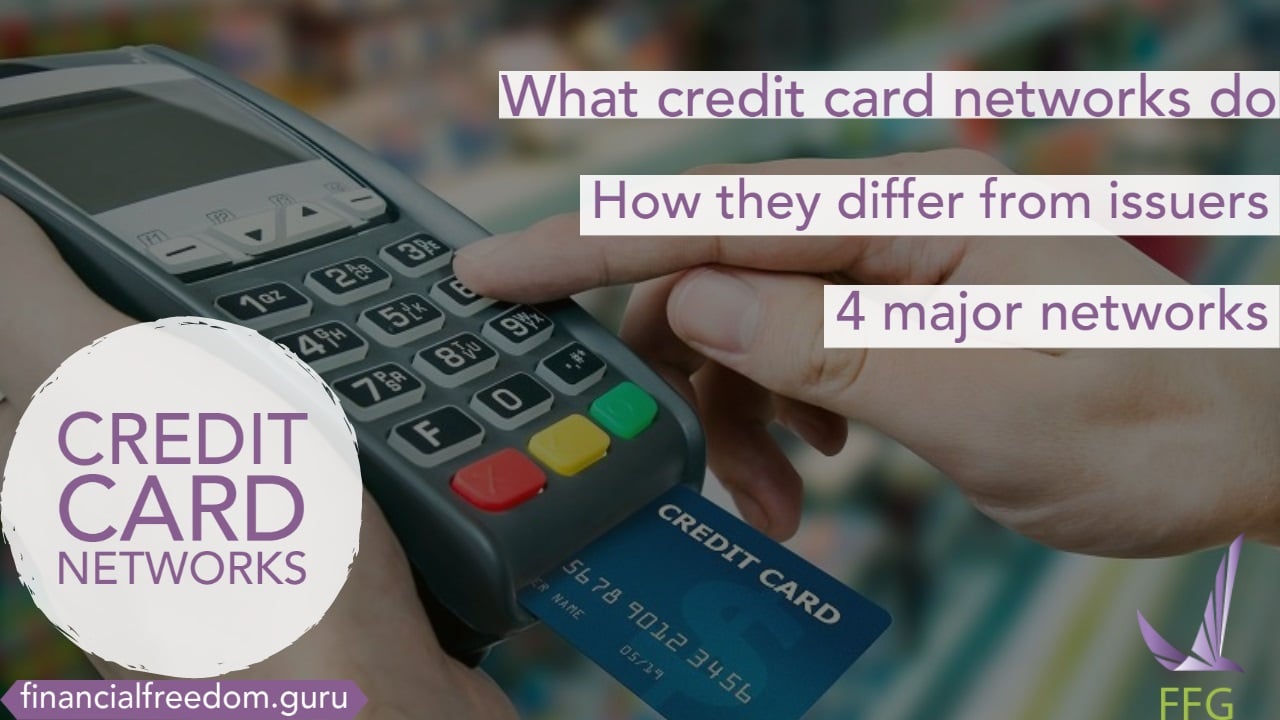Credit Card Networks: What Is Their Role?

Updated: October 21, 2022
You know their names and their logos: American Express, Discover, Visa, and MasterCard. However, you may not be as sure as to what exactly they do. Did you know that these four companies are the largest credit card networks in the world? They process transactions for over half a billion credit cards. These companies are vital to commerce. They determine the cards you can use to pay at the cash register or make your purchase online.
Table of Contents
What Do Credit Card Networks Do?
Credit Card Network Definition
A credit card network is also known as a processing network. The processing network determines where their affiliated credit card can be used. If a merchant is not within the credit card’s network, you cannot use the associated card at that merchant. Many stores list the card networks they will accept using logos or other signs at the cash register. Online stores and services will usually indicate what credit card networks they use on the website’s payment page. They may also restrict the input of the card number and CCV code to the format of the card network. (Visa cards usually start with the number 4 and have 16 digit card numbers. MasterCards also contain 16 digits, but start with 5. American Express credit cards start with 34 or 37 and carry 15 digits; Discover cards start with 6.)
How Do Credit Card Networks Make Money?
Payment networks are critical to facilitating payments from the credit card customer to the merchant. The network communicates between the credit card account and the merchant’s bank account. It makes sure that the right accounts are debited and credited. A small fee of about 1-3% is deducted from the merchant’s credit, which is then split between the credit card network and the credit card company.
How Do They Differ from Credit Card Companies?
Unless your credit card company is also your credit card issuer (as discussed later), they shouldn’t have the same functions. Your credit card company (also known as your credit card issuer) is the company taking on the financial risk. They’re the ones backing up your credit with real money and are also responsible for customer management. Credit card companies provide customer service assistance and receive payment for your bill. Card issuers approve your application, set up the card’s limit and interest rates, and define the account conditions. Your card benefits are usually due to your credit card company, although some benefits (like rental car insurance) are network-wide. Credit card companies manage any credit card point redemptions and pay for your card and travel bonuses. Some of the most popular issuers are Chase, Capital One, Citibank, Bank of America, Wells Fargo, and US Bank.
When Processing Networks Are Also Credit Card Issuers
In a few cases, the processing network is the credit card issuer. Most American Express and Discover cards are not issued by third-party credit card companies. You apply directly to either company for a credit card, and if approved, the company manages the customer relationship directly. This means that American Express sets your interest rate, credit limit, benefits, and other terms for your credit card. You also pay your credit card bills to them directly. If you have concerns or questions about your account, you contact American Express. This differs from Visa and MasterCard, who use multiple third-party credit card companies to issue their cards. Your application process and approval is managed by a separate credit card issuing company. This company is also responsible for how your account is set up. You ask questions and concerns to the credit card issuer; Visa and MasterCard generally do not deal with the customer directly.
The Four Largest Credit Card Networks – a Brief Description
There are a number of processing networks, but the four main ones are listed below.
This is an American multinational processing network that manages transactions for over 323 million credit cards. The company does business with over 8 million merchants worldwide. They offer standard and premium rewards to their cardholders, depending on the level of card the customer holds. Visa has also transitioned into e-commerce with Visa Checkout, and Verified by Visa, for secured online shopping transactions.
It has over 191 million cardholders and is the second-largest credit card network in the U.S. It serves merchants in more than 210 countries and handles payment in over 150 different currencies.
This network has expanded into 130 countries and provides services to 58 million cardholders. On average, they manage 6 billion transactions per year, making them the world’s largest credit card issuer by transactions. American Express customers tend to be high income, with strong credit scores.
It processes credit card transactions for more than 57 million cardholders. The company has made a name for itself through promotional cash back and travel offers. Its fraud protection is very highly regarded in the industry. Discover has kept itself accessible to all cardholders, accepting customers with fair credit scores, and higher.
Understand the Role of Credit Card Networks
A credit card network’s role is one of a facilitator. It connects the credit card account to the merchant’s account and allows the transaction to occur. There are four main credit card networks. Visa and MasterCard are strictly processing networks. American Express and Discover are both credit card networks and issuers combined. This means that they take on customer management as well as processing duties, while Visa and MasterCard do not.
When it’s time to pay, a merchant will usually let you know with which credit card network they are affiliated. Physical retail stores and online shops usually let you know which credit card networks they work with at the point of sale. This is usually the time when you’re about to swipe, insert, or input your credit card details. Once you make sure you use the right credit card for the network, the rest should go smoothly.





